如何正确应用GNU GPLv3 和 LGPLv3 协议
文章目录
- 前言
- GNU GPLv3.0
- Permissions(许可)
- Conditions(条件)
- Limitations(限制)
- GNU LGPLv3.0
- 应用GPLv3.0
- 应用LGPLv3.0
- 建议的内容:添加文件头声明
- 附录
- GNU GPLv3.0原文
- GNU LGPLv3.0 原文
前言
对于了解开源的朋友们,GNU GPL系列协议可谓是老朋友了。原来我基本上都是使用MIT License,应用简单。但是最近我计划做一个项目,使用到了GNU LGPLv3.0协议,但是其应用有点麻烦,所以在此记录一下。
GNU GPLv3.0
在应用之前我们先来了解一下GPLv3,这是非常必要的。GPL是一种copyleft类的协议,对于版权的保护力度很强,如果使用不当很可能扯上官司。另一方面,它又可以很好的帮助开发者维权。
Permissions(许可)
- Commercial use:被许可的材料和衍生产品可用于商业目的。
- Distribution:可以分发被许可的材料。
- Modification:可以修改被许可的材料。
- Patent use:明确授予贡献者的专利权。
- Private use:允许私人修改与使用被许可的材料。
Conditions(条件)
- Disclose source:分发许可材料时必须提供源代码。
- License and copyright notice:许可材料中必须包含许可证和版权声明的副本。
- Same license:分发许可材料时,必须在同一许可证下发布修改。在某些情况下,可以使用类似的相关许可证。
- State changes:必须记录对许可材料所做的更改。
Limitations(限制)
- Liability:本许可包括责任限制。
- Warranty:本许可证明确声明不提供任何担保。
GNU LGPLv3.0
LGPLv3基本与GPLv3相同,唯一不同的就是Same License不适用于Library。如何去理解呢?GPL的起草者Stallman是一个开源坚定的捍卫者,LGPL也是出于为了推广GPL类协议而无奈提出的。所以LGPL里说的都不是人话。大概意思就是如果你动态链接此库,GPL的传染性就此止步。因此,LGPL是商业友好的。
应用GPLv3.0
在项目文件夹里创建一个文件,一般按照GNU项目的惯例是COPYING,但是你也可以换成其他的,比如QT5项目文件夹的协议名就是LICENSE.GPL3。然后粘贴协议内容。
应用LGPLv3.0
在应用LGPLv3.0之前,你必须先应用GPLv3.0,所以LGPL更像是一种附加条款。要应用它,在项目文件夹里创建一个文件,同样按照惯例是COPYING.LESSER。然后粘贴协议内容。
建议的内容:添加文件头声明
我们建议在每个源文件开头添加文件头声明,样板可以在GPLv3的文件结尾部分找到,然后修改软件描述于版权声明即可:
<one line to give the program's name and a brief idea of what it does.>Copyright (C) <year> <name of author>This program is free software: you can redistribute it and/or modifyit under the terms of the GNU General Public License as published bythe Free Software Foundation, either version 3 of the License, or(at your option) any later version.This program is distributed in the hope that it will be useful,but WITHOUT ANY WARRANTY; without even the implied warranty ofMERCHANTABILITY or FITNESS FOR A PARTICULAR PURPOSE. See theGNU General Public License for more details.You should have received a copy of the GNU General Public Licensealong with this program. If not, see <https://www.gnu.org/licenses/>.如果你的项目包含了控制台的二进制文件,GPL也提供了以下输出模板:
<program> Copyright (C) <year> <name of author>This program comes with ABSOLUTELY NO WARRANTY; for details type `show w'.This is free software, and you are welcome to redistribute itunder certain conditions; type `show c' for details.
以上是GPLv3的版本,如果你是使用LGPLv3,则将GNU General Public License字段更改为GNU Lesser General Public License即可。
附录
GNU GPLv3.0原文
GNU GENERAL PUBLIC LICENSEVersion 3, 29 June 2007Copyright (C) 2007 Free Software Foundation, Inc. <https://fsf.org/>Everyone is permitted to copy and distribute verbatim copiesof this license document, but changing it is not allowed.PreambleThe GNU General Public License is a free, copyleft license for
software and other kinds of works.The licenses for most software and other practical works are designed
to take away your freedom to share and change the works. By contrast,
the GNU General Public License is intended to guarantee your freedom to
share and change all versions of a program--to make sure it remains free
software for all its users. We, the Free Software Foundation, use the
GNU General Public License for most of our software; it applies also to
any other work released this way by its authors. You can apply it to
your programs, too.When we speak of free software, we are referring to freedom, not
price. Our General Public Licenses are designed to make sure that you
have the freedom to distribute copies of free software (and charge for
them if you wish), that you receive source code or can get it if you
want it, that you can change the software or use pieces of it in new
free programs, and that you know you can do these things.To protect your rights, we need to prevent others from denying you
these rights or asking you to surrender the rights. Therefore, you have
certain responsibilities if you distribute copies of the software, or if
you modify it: responsibilities to respect the freedom of others.For example, if you distribute copies of such a program, whether
gratis or for a fee, you must pass on to the recipients the same
freedoms that you received. You must make sure that they, too, receive
or can get the source code. And you must show them these terms so they
know their rights.Developers that use the GNU GPL protect your rights with two steps:
(1) assert copyright on the software, and (2) offer you this License
giving you legal permission to copy, distribute and/or modify it.For the developers' and authors' protection, the GPL clearly explains
that there is no warranty for this free software. For both users' and
authors' sake, the GPL requires that modified versions be marked as
changed, so that their problems will not be attributed erroneously to
authors of previous versions.Some devices are designed to deny users access to install or run
modified versions of the software inside them, although the manufacturer
can do so. This is fundamentally incompatible with the aim of
protecting users' freedom to change the software. The systematic
pattern of such abuse occurs in the area of products for individuals to
use, which is precisely where it is most unacceptable. Therefore, we
have designed this version of the GPL to prohibit the practice for those
products. If such problems arise substantially in other domains, we
stand ready to extend this provision to those domains in future versions
of the GPL, as needed to protect the freedom of users.Finally, every program is threatened constantly by software patents.
States should not allow patents to restrict development and use of
software on general-purpose computers, but in those that do, we wish to
avoid the special danger that patents applied to a free program could
make it effectively proprietary. To prevent this, the GPL assures that
patents cannot be used to render the program non-free.The precise terms and conditions for copying, distribution and
modification follow.TERMS AND CONDITIONS0. Definitions."This License" refers to version 3 of the GNU General Public License."Copyright" also means copyright-like laws that apply to other kinds of
works, such as semiconductor masks."The Program" refers to any copyrightable work licensed under this
License. Each licensee is addressed as "you". "Licensees" and
"recipients" may be individuals or organizations.To "modify" a work means to copy from or adapt all or part of the work
in a fashion requiring copyright permission, other than the making of an
exact copy. The resulting work is called a "modified version" of the
earlier work or a work "based on" the earlier work.A "covered work" means either the unmodified Program or a work based
on the Program.To "propagate" a work means to do anything with it that, without
permission, would make you directly or secondarily liable for
infringement under applicable copyright law, except executing it on a
computer or modifying a private copy. Propagation includes copying,
distribution (with or without modification), making available to the
public, and in some countries other activities as well.To "convey" a work means any kind of propagation that enables other
parties to make or receive copies. Mere interaction with a user through
a computer network, with no transfer of a copy, is not conveying.An interactive user interface displays "Appropriate Legal Notices"
to the extent that it includes a convenient and prominently visible
feature that (1) displays an appropriate copyright notice, and (2)
tells the user that there is no warranty for the work (except to the
extent that warranties are provided), that licensees may convey the
work under this License, and how to view a copy of this License. If
the interface presents a list of user commands or options, such as a
menu, a prominent item in the list meets this criterion.1. Source Code.The "source code" for a work means the preferred form of the work
for making modifications to it. "Object code" means any non-source
form of a work.A "Standard Interface" means an interface that either is an official
standard defined by a recognized standards body, or, in the case of
interfaces specified for a particular programming language, one that
is widely used among developers working in that language.The "System Libraries" of an executable work include anything, other
than the work as a whole, that (a) is included in the normal form of
packaging a Major Component, but which is not part of that Major
Component, and (b) serves only to enable use of the work with that
Major Component, or to implement a Standard Interface for which an
implementation is available to the public in source code form. A
"Major Component", in this context, means a major essential component
(kernel, window system, and so on) of the specific operating system
(if any) on which the executable work runs, or a compiler used to
produce the work, or an object code interpreter used to run it.The "Corresponding Source" for a work in object code form means all
the source code needed to generate, install, and (for an executable
work) run the object code and to modify the work, including scripts to
control those activities. However, it does not include the work's
System Libraries, or general-purpose tools or generally available free
programs which are used unmodified in performing those activities but
which are not part of the work. For example, Corresponding Source
includes interface definition files associated with source files for
the work, and the source code for shared libraries and dynamically
linked subprograms that the work is specifically designed to require,
such as by intimate data communication or control flow between those
subprograms and other parts of the work.The Corresponding Source need not include anything that users
can regenerate automatically from other parts of the Corresponding
Source.The Corresponding Source for a work in source code form is that
same work.2. Basic Permissions.All rights granted under this License are granted for the term of
copyright on the Program, and are irrevocable provided the stated
conditions are met. This License explicitly affirms your unlimited
permission to run the unmodified Program. The output from running a
covered work is covered by this License only if the output, given its
content, constitutes a covered work. This License acknowledges your
rights of fair use or other equivalent, as provided by copyright law.You may make, run and propagate covered works that you do not
convey, without conditions so long as your license otherwise remains
in force. You may convey covered works to others for the sole purpose
of having them make modifications exclusively for you, or provide you
with facilities for running those works, provided that you comply with
the terms of this License in conveying all material for which you do
not control copyright. Those thus making or running the covered works
for you must do so exclusively on your behalf, under your direction
and control, on terms that prohibit them from making any copies of
your copyrighted material outside their relationship with you.Conveying under any other circumstances is permitted solely under
the conditions stated below. Sublicensing is not allowed; section 10
makes it unnecessary.3. Protecting Users' Legal Rights From Anti-Circumvention Law.No covered work shall be deemed part of an effective technological
measure under any applicable law fulfilling obligations under article
11 of the WIPO copyright treaty adopted on 20 December 1996, or
similar laws prohibiting or restricting circumvention of such
measures.When you convey a covered work, you waive any legal power to forbid
circumvention of technological measures to the extent such circumvention
is effected by exercising rights under this License with respect to
the covered work, and you disclaim any intention to limit operation or
modification of the work as a means of enforcing, against the work's
users, your or third parties' legal rights to forbid circumvention of
technological measures.4. Conveying Verbatim Copies.You may convey verbatim copies of the Program's source code as you
receive it, in any medium, provided that you conspicuously and
appropriately publish on each copy an appropriate copyright notice;
keep intact all notices stating that this License and any
non-permissive terms added in accord with section 7 apply to the code;
keep intact all notices of the absence of any warranty; and give all
recipients a copy of this License along with the Program.You may charge any price or no price for each copy that you convey,
and you may offer support or warranty protection for a fee.5. Conveying Modified Source Versions.You may convey a work based on the Program, or the modifications to
produce it from the Program, in the form of source code under the
terms of section 4, provided that you also meet all of these conditions:a) The work must carry prominent notices stating that you modifiedit, and giving a relevant date.b) The work must carry prominent notices stating that it isreleased under this License and any conditions added under section7. This requirement modifies the requirement in section 4 to"keep intact all notices".c) You must license the entire work, as a whole, under thisLicense to anyone who comes into possession of a copy. ThisLicense will therefore apply, along with any applicable section 7additional terms, to the whole of the work, and all its parts,regardless of how they are packaged. This License gives nopermission to license the work in any other way, but it does notinvalidate such permission if you have separately received it.d) If the work has interactive user interfaces, each must displayAppropriate Legal Notices; however, if the Program has interactiveinterfaces that do not display Appropriate Legal Notices, yourwork need not make them do so.A compilation of a covered work with other separate and independent
works, which are not by their nature extensions of the covered work,
and which are not combined with it such as to form a larger program,
in or on a volume of a storage or distribution medium, is called an
"aggregate" if the compilation and its resulting copyright are not
used to limit the access or legal rights of the compilation's users
beyond what the individual works permit. Inclusion of a covered work
in an aggregate does not cause this License to apply to the other
parts of the aggregate.6. Conveying Non-Source Forms.You may convey a covered work in object code form under the terms
of sections 4 and 5, provided that you also convey the
machine-readable Corresponding Source under the terms of this License,
in one of these ways:a) Convey the object code in, or embodied in, a physical product(including a physical distribution medium), accompanied by theCorresponding Source fixed on a durable physical mediumcustomarily used for software interchange.b) Convey the object code in, or embodied in, a physical product(including a physical distribution medium), accompanied by awritten offer, valid for at least three years and valid for aslong as you offer spare parts or customer support for that productmodel, to give anyone who possesses the object code either (1) acopy of the Corresponding Source for all the software in theproduct that is covered by this License, on a durable physicalmedium customarily used for software interchange, for a price nomore than your reasonable cost of physically performing thisconveying of source, or (2) access to copy theCorresponding Source from a network server at no charge.c) Convey individual copies of the object code with a copy of thewritten offer to provide the Corresponding Source. Thisalternative is allowed only occasionally and noncommercially, andonly if you received the object code with such an offer, in accordwith subsection 6b.d) Convey the object code by offering access from a designatedplace (gratis or for a charge), and offer equivalent access to theCorresponding Source in the same way through the same place at nofurther charge. You need not require recipients to copy theCorresponding Source along with the object code. If the place tocopy the object code is a network server, the Corresponding Sourcemay be on a different server (operated by you or a third party)that supports equivalent copying facilities, provided you maintainclear directions next to the object code saying where to find theCorresponding Source. Regardless of what server hosts theCorresponding Source, you remain obligated to ensure that it isavailable for as long as needed to satisfy these requirements.e) Convey the object code using peer-to-peer transmission, providedyou inform other peers where the object code and CorrespondingSource of the work are being offered to the general public at nocharge under subsection 6d.A separable portion of the object code, whose source code is excluded
from the Corresponding Source as a System Library, need not be
included in conveying the object code work.A "User Product" is either (1) a "consumer product", which means any
tangible personal property which is normally used for personal, family,
or household purposes, or (2) anything designed or sold for incorporation
into a dwelling. In determining whether a product is a consumer product,
doubtful cases shall be resolved in favor of coverage. For a particular
product received by a particular user, "normally used" refers to a
typical or common use of that class of product, regardless of the status
of the particular user or of the way in which the particular user
actually uses, or expects or is expected to use, the product. A product
is a consumer product regardless of whether the product has substantial
commercial, industrial or non-consumer uses, unless such uses represent
the only significant mode of use of the product."Installation Information" for a User Product means any methods,
procedures, authorization keys, or other information required to install
and execute modified versions of a covered work in that User Product from
a modified version of its Corresponding Source. The information must
suffice to ensure that the continued functioning of the modified object
code is in no case prevented or interfered with solely because
modification has been made.If you convey an object code work under this section in, or with, or
specifically for use in, a User Product, and the conveying occurs as
part of a transaction in which the right of possession and use of the
User Product is transferred to the recipient in perpetuity or for a
fixed term (regardless of how the transaction is characterized), the
Corresponding Source conveyed under this section must be accompanied
by the Installation Information. But this requirement does not apply
if neither you nor any third party retains the ability to install
modified object code on the User Product (for example, the work has
been installed in ROM).The requirement to provide Installation Information does not include a
requirement to continue to provide support service, warranty, or updates
for a work that has been modified or installed by the recipient, or for
the User Product in which it has been modified or installed. Access to a
network may be denied when the modification itself materially and
adversely affects the operation of the network or violates the rules and
protocols for communication across the network.Corresponding Source conveyed, and Installation Information provided,
in accord with this section must be in a format that is publicly
documented (and with an implementation available to the public in
source code form), and must require no special password or key for
unpacking, reading or copying.7. Additional Terms."Additional permissions" are terms that supplement the terms of this
License by making exceptions from one or more of its conditions.
Additional permissions that are applicable to the entire Program shall
be treated as though they were included in this License, to the extent
that they are valid under applicable law. If additional permissions
apply only to part of the Program, that part may be used separately
under those permissions, but the entire Program remains governed by
this License without regard to the additional permissions.When you convey a copy of a covered work, you may at your option
remove any additional permissions from that copy, or from any part of
it. (Additional permissions may be written to require their own
removal in certain cases when you modify the work.) You may place
additional permissions on material, added by you to a covered work,
for which you have or can give appropriate copyright permission.Notwithstanding any other provision of this License, for material you
add to a covered work, you may (if authorized by the copyright holders of
that material) supplement the terms of this License with terms:a) Disclaiming warranty or limiting liability differently from theterms of sections 15 and 16 of this License; orb) Requiring preservation of specified reasonable legal notices orauthor attributions in that material or in the Appropriate LegalNotices displayed by works containing it; orc) Prohibiting misrepresentation of the origin of that material, orrequiring that modified versions of such material be marked inreasonable ways as different from the original version; ord) Limiting the use for publicity purposes of names of licensors orauthors of the material; ore) Declining to grant rights under trademark law for use of sometrade names, trademarks, or service marks; orf) Requiring indemnification of licensors and authors of thatmaterial by anyone who conveys the material (or modified versions ofit) with contractual assumptions of liability to the recipient, forany liability that these contractual assumptions directly impose onthose licensors and authors.All other non-permissive additional terms are considered "further
restrictions" within the meaning of section 10. If the Program as you
received it, or any part of it, contains a notice stating that it is
governed by this License along with a term that is a further
restriction, you may remove that term. If a license document contains
a further restriction but permits relicensing or conveying under this
License, you may add to a covered work material governed by the terms
of that license document, provided that the further restriction does
not survive such relicensing or conveying.If you add terms to a covered work in accord with this section, you
must place, in the relevant source files, a statement of the
additional terms that apply to those files, or a notice indicating
where to find the applicable terms.Additional terms, permissive or non-permissive, may be stated in the
form of a separately written license, or stated as exceptions;
the above requirements apply either way.8. Termination.You may not propagate or modify a covered work except as expressly
provided under this License. Any attempt otherwise to propagate or
modify it is void, and will automatically terminate your rights under
this License (including any patent licenses granted under the third
paragraph of section 11).However, if you cease all violation of this License, then your
license from a particular copyright holder is reinstated (a)
provisionally, unless and until the copyright holder explicitly and
finally terminates your license, and (b) permanently, if the copyright
holder fails to notify you of the violation by some reasonable means
prior to 60 days after the cessation.Moreover, your license from a particular copyright holder is
reinstated permanently if the copyright holder notifies you of the
violation by some reasonable means, this is the first time you have
received notice of violation of this License (for any work) from that
copyright holder, and you cure the violation prior to 30 days after
your receipt of the notice.Termination of your rights under this section does not terminate the
licenses of parties who have received copies or rights from you under
this License. If your rights have been terminated and not permanently
reinstated, you do not qualify to receive new licenses for the same
material under section 10.9. Acceptance Not Required for Having Copies.You are not required to accept this License in order to receive or
run a copy of the Program. Ancillary propagation of a covered work
occurring solely as a consequence of using peer-to-peer transmission
to receive a copy likewise does not require acceptance. However,
nothing other than this License grants you permission to propagate or
modify any covered work. These actions infringe copyright if you do
not accept this License. Therefore, by modifying or propagating a
covered work, you indicate your acceptance of this License to do so.10. Automatic Licensing of Downstream Recipients.Each time you convey a covered work, the recipient automatically
receives a license from the original licensors, to run, modify and
propagate that work, subject to this License. You are not responsible
for enforcing compliance by third parties with this License.An "entity transaction" is a transaction transferring control of an
organization, or substantially all assets of one, or subdividing an
organization, or merging organizations. If propagation of a covered
work results from an entity transaction, each party to that
transaction who receives a copy of the work also receives whatever
licenses to the work the party's predecessor in interest had or could
give under the previous paragraph, plus a right to possession of the
Corresponding Source of the work from the predecessor in interest, if
the predecessor has it or can get it with reasonable efforts.You may not impose any further restrictions on the exercise of the
rights granted or affirmed under this License. For example, you may
not impose a license fee, royalty, or other charge for exercise of
rights granted under this License, and you may not initiate litigation
(including a cross-claim or counterclaim in a lawsuit) alleging that
any patent claim is infringed by making, using, selling, offering for
sale, or importing the Program or any portion of it.11. Patents.A "contributor" is a copyright holder who authorizes use under this
License of the Program or a work on which the Program is based. The
work thus licensed is called the contributor's "contributor version".A contributor's "essential patent claims" are all patent claims
owned or controlled by the contributor, whether already acquired or
hereafter acquired, that would be infringed by some manner, permitted
by this License, of making, using, or selling its contributor version,
but do not include claims that would be infringed only as a
consequence of further modification of the contributor version. For
purposes of this definition, "control" includes the right to grant
patent sublicenses in a manner consistent with the requirements of
this License.Each contributor grants you a non-exclusive, worldwide, royalty-free
patent license under the contributor's essential patent claims, to
make, use, sell, offer for sale, import and otherwise run, modify and
propagate the contents of its contributor version.In the following three paragraphs, a "patent license" is any express
agreement or commitment, however denominated, not to enforce a patent
(such as an express permission to practice a patent or covenant not to
sue for patent infringement). To "grant" such a patent license to a
party means to make such an agreement or commitment not to enforce a
patent against the party.If you convey a covered work, knowingly relying on a patent license,
and the Corresponding Source of the work is not available for anyone
to copy, free of charge and under the terms of this License, through a
publicly available network server or other readily accessible means,
then you must either (1) cause the Corresponding Source to be so
available, or (2) arrange to deprive yourself of the benefit of the
patent license for this particular work, or (3) arrange, in a manner
consistent with the requirements of this License, to extend the patent
license to downstream recipients. "Knowingly relying" means you have
actual knowledge that, but for the patent license, your conveying the
covered work in a country, or your recipient's use of the covered work
in a country, would infringe one or more identifiable patents in that
country that you have reason to believe are valid.If, pursuant to or in connection with a single transaction or
arrangement, you convey, or propagate by procuring conveyance of, a
covered work, and grant a patent license to some of the parties
receiving the covered work authorizing them to use, propagate, modify
or convey a specific copy of the covered work, then the patent license
you grant is automatically extended to all recipients of the covered
work and works based on it.A patent license is "discriminatory" if it does not include within
the scope of its coverage, prohibits the exercise of, or is
conditioned on the non-exercise of one or more of the rights that are
specifically granted under this License. You may not convey a covered
work if you are a party to an arrangement with a third party that is
in the business of distributing software, under which you make payment
to the third party based on the extent of your activity of conveying
the work, and under which the third party grants, to any of the
parties who would receive the covered work from you, a discriminatory
patent license (a) in connection with copies of the covered work
conveyed by you (or copies made from those copies), or (b) primarily
for and in connection with specific products or compilations that
contain the covered work, unless you entered into that arrangement,
or that patent license was granted, prior to 28 March 2007.Nothing in this License shall be construed as excluding or limiting
any implied license or other defenses to infringement that may
otherwise be available to you under applicable patent law.12. No Surrender of Others' Freedom.If conditions are imposed on you (whether by court order, agreement or
otherwise) that contradict the conditions of this License, they do not
excuse you from the conditions of this License. If you cannot convey a
covered work so as to satisfy simultaneously your obligations under this
License and any other pertinent obligations, then as a consequence you may
not convey it at all. For example, if you agree to terms that obligate you
to collect a royalty for further conveying from those to whom you convey
the Program, the only way you could satisfy both those terms and this
License would be to refrain entirely from conveying the Program.13. Use with the GNU Affero General Public License.Notwithstanding any other provision of this License, you have
permission to link or combine any covered work with a work licensed
under version 3 of the GNU Affero General Public License into a single
combined work, and to convey the resulting work. The terms of this
License will continue to apply to the part which is the covered work,
but the special requirements of the GNU Affero General Public License,
section 13, concerning interaction through a network will apply to the
combination as such.14. Revised Versions of this License.The Free Software Foundation may publish revised and/or new versions of
the GNU General Public License from time to time. Such new versions will
be similar in spirit to the present version, but may differ in detail to
address new problems or concerns.Each version is given a distinguishing version number. If the
Program specifies that a certain numbered version of the GNU General
Public License "or any later version" applies to it, you have the
option of following the terms and conditions either of that numbered
version or of any later version published by the Free Software
Foundation. If the Program does not specify a version number of the
GNU General Public License, you may choose any version ever published
by the Free Software Foundation.If the Program specifies that a proxy can decide which future
versions of the GNU General Public License can be used, that proxy's
public statement of acceptance of a version permanently authorizes you
to choose that version for the Program.Later license versions may give you additional or different
permissions. However, no additional obligations are imposed on any
author or copyright holder as a result of your choosing to follow a
later version.15. Disclaimer of Warranty.THERE IS NO WARRANTY FOR THE PROGRAM, TO THE EXTENT PERMITTED BY
APPLICABLE LAW. EXCEPT WHEN OTHERWISE STATED IN WRITING THE COPYRIGHT
HOLDERS AND/OR OTHER PARTIES PROVIDE THE PROGRAM "AS IS" WITHOUT WARRANTY
OF ANY KIND, EITHER EXPRESSED OR IMPLIED, INCLUDING, BUT NOT LIMITED TO,
THE IMPLIED WARRANTIES OF MERCHANTABILITY AND FITNESS FOR A PARTICULAR
PURPOSE. THE ENTIRE RISK AS TO THE QUALITY AND PERFORMANCE OF THE PROGRAM
IS WITH YOU. SHOULD THE PROGRAM PROVE DEFECTIVE, YOU ASSUME THE COST OF
ALL NECESSARY SERVICING, REPAIR OR CORRECTION.16. Limitation of Liability.IN NO EVENT UNLESS REQUIRED BY APPLICABLE LAW OR AGREED TO IN WRITING
WILL ANY COPYRIGHT HOLDER, OR ANY OTHER PARTY WHO MODIFIES AND/OR CONVEYS
THE PROGRAM AS PERMITTED ABOVE, BE LIABLE TO YOU FOR DAMAGES, INCLUDING ANY
GENERAL, SPECIAL, INCIDENTAL OR CONSEQUENTIAL DAMAGES ARISING OUT OF THE
USE OR INABILITY TO USE THE PROGRAM (INCLUDING BUT NOT LIMITED TO LOSS OF
DATA OR DATA BEING RENDERED INACCURATE OR LOSSES SUSTAINED BY YOU OR THIRD
PARTIES OR A FAILURE OF THE PROGRAM TO OPERATE WITH ANY OTHER PROGRAMS),
EVEN IF SUCH HOLDER OR OTHER PARTY HAS BEEN ADVISED OF THE POSSIBILITY OF
SUCH DAMAGES.17. Interpretation of Sections 15 and 16.If the disclaimer of warranty and limitation of liability provided
above cannot be given local legal effect according to their terms,
reviewing courts shall apply local law that most closely approximates
an absolute waiver of all civil liability in connection with the
Program, unless a warranty or assumption of liability accompanies a
copy of the Program in return for a fee.END OF TERMS AND CONDITIONSHow to Apply These Terms to Your New ProgramsIf you develop a new program, and you want it to be of the greatest
possible use to the public, the best way to achieve this is to make it
free software which everyone can redistribute and change under these terms.To do so, attach the following notices to the program. It is safest
to attach them to the start of each source file to most effectively
state the exclusion of warranty; and each file should have at least
the "copyright" line and a pointer to where the full notice is found.<one line to give the program's name and a brief idea of what it does.>Copyright (C) <year> <name of author>This program is free software: you can redistribute it and/or modifyit under the terms of the GNU General Public License as published bythe Free Software Foundation, either version 3 of the License, or(at your option) any later version.This program is distributed in the hope that it will be useful,but WITHOUT ANY WARRANTY; without even the implied warranty ofMERCHANTABILITY or FITNESS FOR A PARTICULAR PURPOSE. See theGNU General Public License for more details.You should have received a copy of the GNU General Public Licensealong with this program. If not, see <https://www.gnu.org/licenses/>.Also add information on how to contact you by electronic and paper mail.If the program does terminal interaction, make it output a short
notice like this when it starts in an interactive mode:<program> Copyright (C) <year> <name of author>This program comes with ABSOLUTELY NO WARRANTY; for details type `show w'.This is free software, and you are welcome to redistribute itunder certain conditions; type `show c' for details.The hypothetical commands `show w' and `show c' should show the appropriate
parts of the General Public License. Of course, your program's commands
might be different; for a GUI interface, you would use an "about box".You should also get your employer (if you work as a programmer) or school,
if any, to sign a "copyright disclaimer" for the program, if necessary.
For more information on this, and how to apply and follow the GNU GPL, see
<https://www.gnu.org/licenses/>.The GNU General Public License does not permit incorporating your program
into proprietary programs. If your program is a subroutine library, you
may consider it more useful to permit linking proprietary applications with
the library. If this is what you want to do, use the GNU Lesser General
Public License instead of this License. But first, please read
<https://www.gnu.org/licenses/why-not-lgpl.html>.
GNU LGPLv3.0 原文
GNU LESSER GENERAL PUBLIC LICENSEVersion 3, 29 June 2007Copyright (C) 2007 Free Software Foundation, Inc. <https://fsf.org/>Everyone is permitted to copy and distribute verbatim copiesof this license document, but changing it is not allowed.This version of the GNU Lesser General Public License incorporates
the terms and conditions of version 3 of the GNU General Public
License, supplemented by the additional permissions listed below.0. Additional Definitions.As used herein, "this License" refers to version 3 of the GNU Lesser
General Public License, and the "GNU GPL" refers to version 3 of the GNU
General Public License."The Library" refers to a covered work governed by this License,
other than an Application or a Combined Work as defined below.An "Application" is any work that makes use of an interface provided
by the Library, but which is not otherwise based on the Library.
Defining a subclass of a class defined by the Library is deemed a mode
of using an interface provided by the Library.A "Combined Work" is a work produced by combining or linking an
Application with the Library. The particular version of the Library
with which the Combined Work was made is also called the "Linked
Version".The "Minimal Corresponding Source" for a Combined Work means the
Corresponding Source for the Combined Work, excluding any source code
for portions of the Combined Work that, considered in isolation, are
based on the Application, and not on the Linked Version.The "Corresponding Application Code" for a Combined Work means the
object code and/or source code for the Application, including any data
and utility programs needed for reproducing the Combined Work from the
Application, but excluding the System Libraries of the Combined Work.1. Exception to Section 3 of the GNU GPL.You may convey a covered work under sections 3 and 4 of this License
without being bound by section 3 of the GNU GPL.2. Conveying Modified Versions.If you modify a copy of the Library, and, in your modifications, a
facility refers to a function or data to be supplied by an Application
that uses the facility (other than as an argument passed when the
facility is invoked), then you may convey a copy of the modified
version:a) under this License, provided that you make a good faith effort toensure that, in the event an Application does not supply thefunction or data, the facility still operates, and performswhatever part of its purpose remains meaningful, orb) under the GNU GPL, with none of the additional permissions ofthis License applicable to that copy.3. Object Code Incorporating Material from Library Header Files.The object code form of an Application may incorporate material from
a header file that is part of the Library. You may convey such object
code under terms of your choice, provided that, if the incorporated
material is not limited to numerical parameters, data structure
layouts and accessors, or small macros, inline functions and templates
(ten or fewer lines in length), you do both of the following:a) Give prominent notice with each copy of the object code that theLibrary is used in it and that the Library and its use arecovered by this License.b) Accompany the object code with a copy of the GNU GPL and this licensedocument.4. Combined Works.You may convey a Combined Work under terms of your choice that,
taken together, effectively do not restrict modification of the
portions of the Library contained in the Combined Work and reverse
engineering for debugging such modifications, if you also do each of
the following:a) Give prominent notice with each copy of the Combined Work thatthe Library is used in it and that the Library and its use arecovered by this License.b) Accompany the Combined Work with a copy of the GNU GPL and this licensedocument.c) For a Combined Work that displays copyright notices duringexecution, include the copyright notice for the Library amongthese notices, as well as a reference directing the user to thecopies of the GNU GPL and this license document.d) Do one of the following:0) Convey the Minimal Corresponding Source under the terms of thisLicense, and the Corresponding Application Code in a formsuitable for, and under terms that permit, the user torecombine or relink the Application with a modified version ofthe Linked Version to produce a modified Combined Work, in themanner specified by section 6 of the GNU GPL for conveyingCorresponding Source.1) Use a suitable shared library mechanism for linking with theLibrary. A suitable mechanism is one that (a) uses at run timea copy of the Library already present on the user's computersystem, and (b) will operate properly with a modified versionof the Library that is interface-compatible with the LinkedVersion.e) Provide Installation Information, but only if you would otherwisebe required to provide such information under section 6 of theGNU GPL, and only to the extent that such information isnecessary to install and execute a modified version of theCombined Work produced by recombining or relinking theApplication with a modified version of the Linked Version. (Ifyou use option 4d0, the Installation Information must accompanythe Minimal Corresponding Source and Corresponding ApplicationCode. If you use option 4d1, you must provide the InstallationInformation in the manner specified by section 6 of the GNU GPLfor conveying Corresponding Source.)5. Combined Libraries.You may place library facilities that are a work based on the
Library side by side in a single library together with other library
facilities that are not Applications and are not covered by this
License, and convey such a combined library under terms of your
choice, if you do both of the following:a) Accompany the combined library with a copy of the same work basedon the Library, uncombined with any other library facilities,conveyed under the terms of this License.b) Give prominent notice with the combined library that part of itis a work based on the Library, and explaining where to find theaccompanying uncombined form of the same work.6. Revised Versions of the GNU Lesser General Public License.The Free Software Foundation may publish revised and/or new versions
of the GNU Lesser General Public License from time to time. Such new
versions will be similar in spirit to the present version, but may
differ in detail to address new problems or concerns.Each version is given a distinguishing version number. If the
Library as you received it specifies that a certain numbered version
of the GNU Lesser General Public License "or any later version"
applies to it, you have the option of following the terms and
conditions either of that published version or of any later version
published by the Free Software Foundation. If the Library as you
received it does not specify a version number of the GNU Lesser
General Public License, you may choose any version of the GNU Lesser
General Public License ever published by the Free Software Foundation.If the Library as you received it specifies that a proxy can decide
whether future versions of the GNU Lesser General Public License shall
apply, that proxy's public statement of acceptance of any version is
permanent authorization for you to choose that version for the
Library.
参考:
https://choosealicense.com/licenses/gpl-3.0/
https://choosealicense.com/licenses/lgpl-3.0/
相关文章:

如何正确应用GNU GPLv3 和 LGPLv3 协议
文章目录前言GNU GPLv3.0Permissions(许可)Conditions(条件)Limitations(限制)GNU LGPLv3.0应用GPLv3.0应用LGPLv3.0建议的内容:添加文件头声明附录GNU GPLv3.0原文GNU LGPLv3.0 原文前言 对于了解开源的朋友们,GNU GPL系列协议可谓是老朋友了。原来我基…...

Python局部函数及用法(包含nonlocal关键字)
Python 函数内部可以定义变量,这样就产生了局部变量,可能有人会问,Python 函数内部能定义函数吗?答案是肯定的。Python 支持在函数内部定义函数,此类函数又称为局部函数。 那么,局部函数有哪些特征&#x…...

关于BMS的介绍及应用领域
电池管理系统(Battery Management System,BMS)是一种集成电路系统,它用于监测和控制电池系统状态,以确保电池的正常运行和安全使用。BMS的应用涵盖了电动汽车、储能系统、无人机、电动工具等各个领域,可以提…...

2月datawhale组队学习:大数据
文章目录一、大数据概述二、 Hadoop2.1 Hadoop概述2.2 su:Authentication failure2.3 使用sudo命令报错xxx is not in the sudoers file. This incident will be reported.2.4 创建用户datawhale,安装java8:2.5 安装单机版Hadoop2.5.1 安装Hadoop2.5.2 修…...

在Spring框架中创建Bean实例的几种方法
我们希望Spring框架帮忙管理Bean实例,以便得到框架所带来的种种功能,例如依赖注入等。将一个类纳入Spring容器管理的方式有几种,它们可以解决在不同场景下创建实例的需求。 XML配置文件声明 <?xml version"1.0" encoding"…...
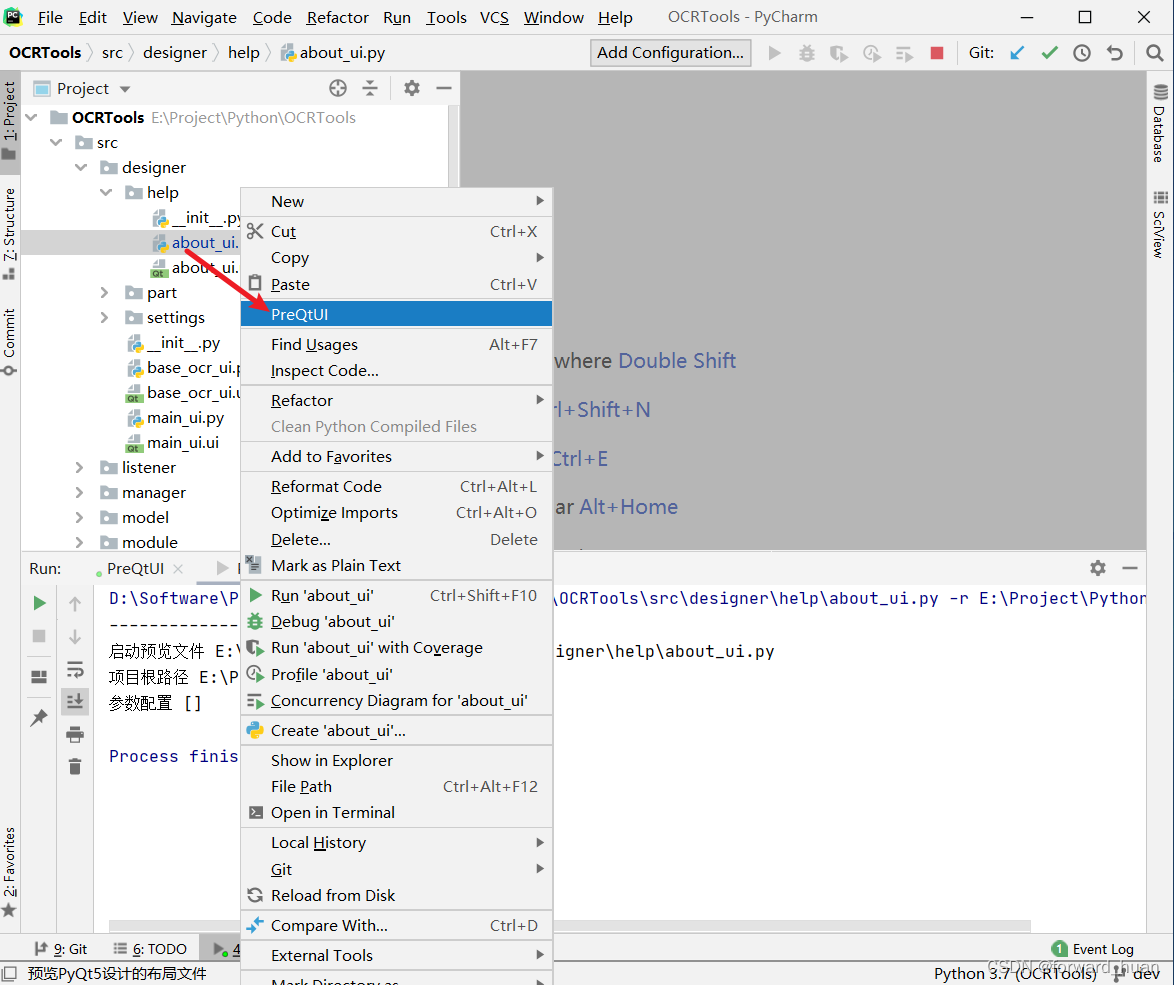
PyQt5 界面预览工具
简介 一款为了预览PyQt5设计的UI界面而开发的工具,使用时需要结合PyCharm同时使用。 下载 PyQt5界面预览工具 参数说明 使用配置 启动PyCharm,找到File -> Settings,打开 找到Tools -> External Tools点击打开,在新界面…...

day44【代码随想录】动态规划之零钱兑换II、组合总和 Ⅳ、零钱兑换
文章目录前言一、零钱兑换II(力扣518)二、组合总和 Ⅳ(力扣377)三、零钱兑换(力扣322)总结前言 1、零钱兑换II 2、组合总和 Ⅳ 3、零钱兑换 一、零钱兑换II(力扣518) 给你一个整数…...
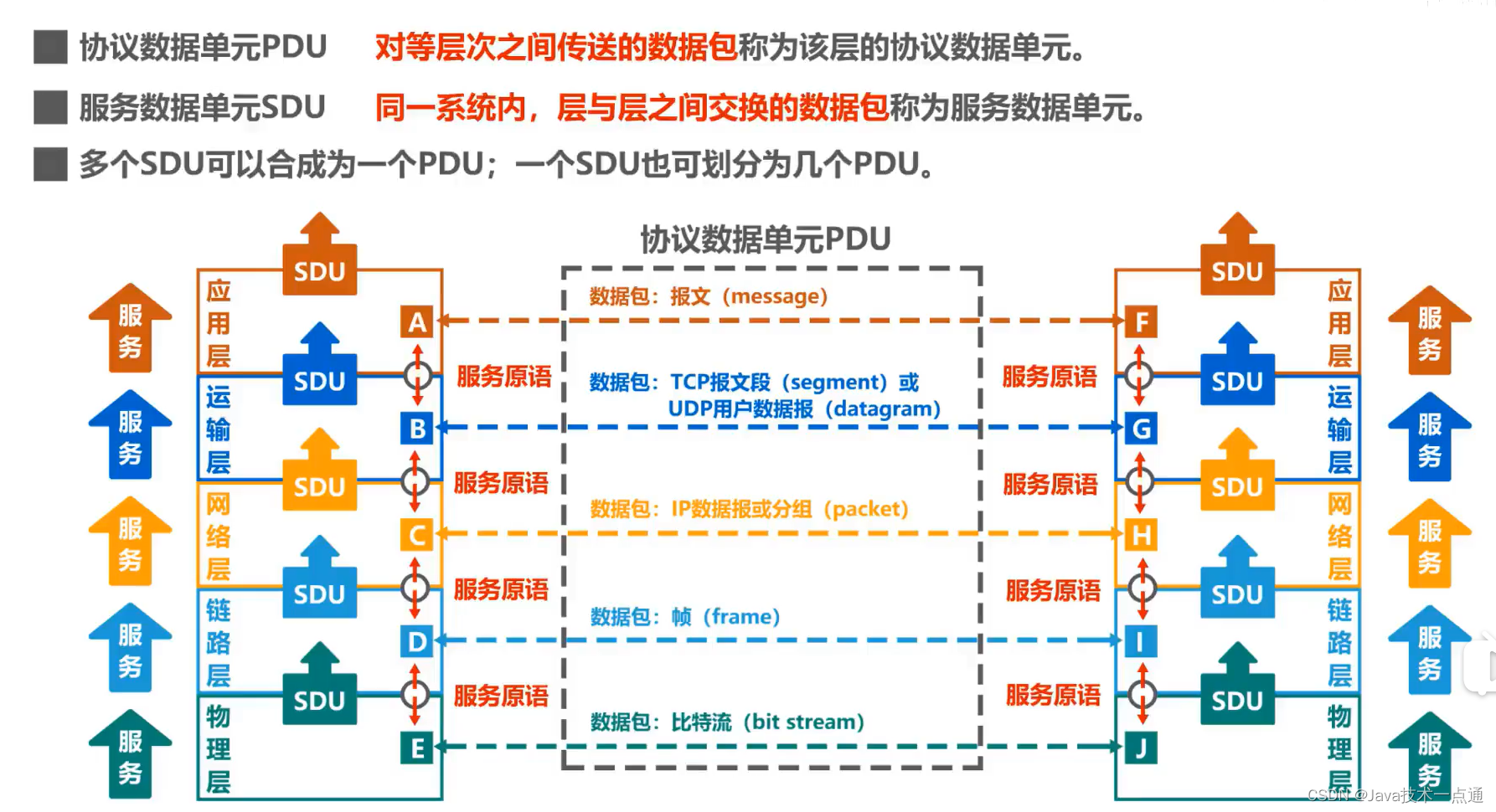
计算机网络第1章(概述)学习笔记
❤ 作者主页:欢迎来到我的技术博客😎 ❀ 个人介绍:大家好,本人热衷于Java后端开发,欢迎来交流学习哦!( ̄▽ ̄)~* 🍊 如果文章对您有帮助,记得关注、点赞、收藏、…...
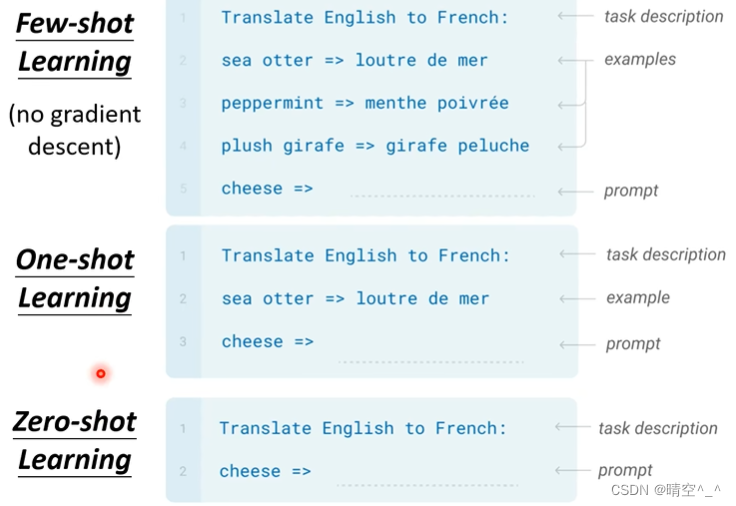
GPT-3(Language Models are Few-shot Learners)简介
GPT-3(Language Models are Few-shot Learners) 一、GPT-2 1. 网络架构: GPT系列的网络架构是Transformer的Decoder,有关Transformer的Decoder的内容可以看我之前的文章。 简单来说,就是利用Masked multi-head attention来提取文本信息&a…...

容器安全风险and容器逃逸漏洞实践
本文博客地址:https://security.blog.csdn.net/article/details/128966455 一、Docker存在的安全风险 1.1、Docker镜像存在的风险 不安全的第三方组件:用户自己的代码依赖若干开源组件,这些开源组件本身又有着复杂的依赖树,甚至…...

2023年美赛B题-重新想象马赛马拉
背景 肯尼亚的野生动物保护区最初主要是为了保护野生动物和其他自然资源资源。肯尼亚议会于2013年通过了《野生动物保护和管理法》提供更公平的资源共享,并允许替代的、以社区为基础的管理工作[1]。此后,肯尼亚增加了修正案,以解决立法中的空…...

Docker常用命令总结
目录 一、帮助启动类命令 (1)启动docker (2)停止docker (3)重启docker (4)查看docker (5)设置开机自启 (6)查看docker概要信息…...
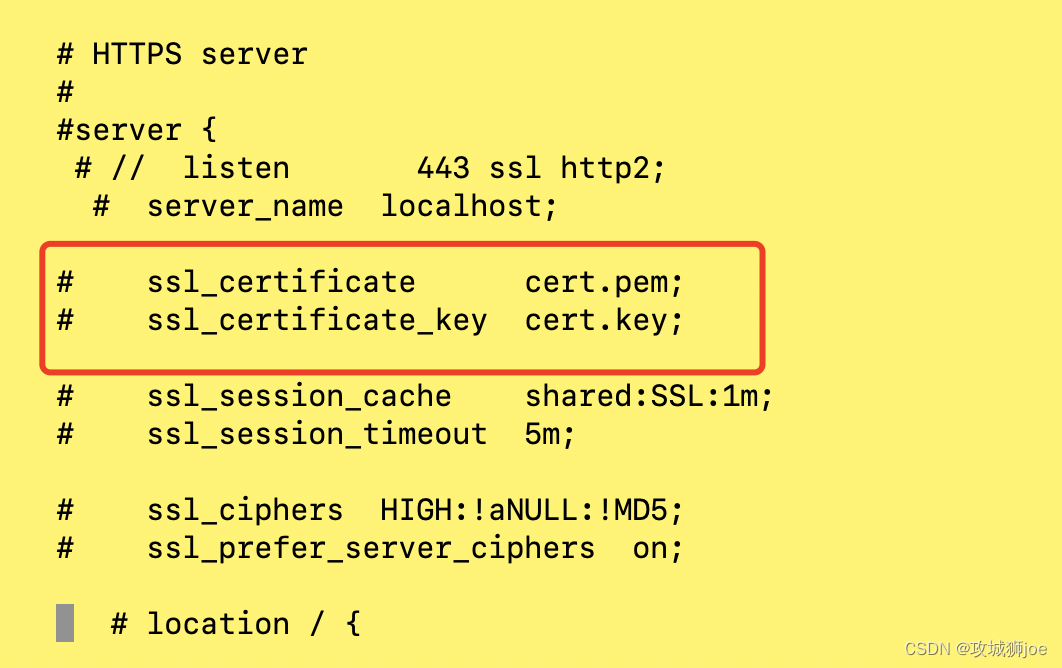
mac环境,安装NMP遇到的问题
一 背景 项目开发中,公司项目需要使用本地的环境运行,主要是php这块的业务。没有使用docker来处理,重新手动撸了一遍。记录下其中遇到的问题; 二 遇到的问题 2.1 Nginx的问题 brew install nginx后,启动nginx,报错如下:nginx: [emerg] no "ssl_certificate" …...

Web Worker 与 SharedWorker 的介绍和使用
目录一、Web Worker1 Web Worker 是什么2 Web Worker 使用3 简单示例二、SharedWorker2.1 SharedWorker 是什么2.2 SharedWorker 的使用方式2.3 多页面数据共享的例子一、Web Worker 1 Web Worker 是什么 Web Worker是 HTML5 标准的一部分,这一规范定义了一套 API…...

React:Redux和Flux
React,用来构建用户界面,它有三个特点: 作为view,构建上用户界面虚拟DOM,目的就是高性能DOM渲染【diff算法】、组件化、多端同构单向数据流,是一种自上而下的渲染方式。Flux 在一个React应用中,UI部分是由无数个组件嵌套构成的,组件和组件之间就存在层级关系,也就是父…...

TypeScript 学习之Class
基本使用 class Greeter {// 属性greeting: string;// 构造函数constructor(message: string) {// 用this 访问类的属性this.greeting message;}// 方法greet() {return Hello, this.greeting;} } // 实例化 let greeter new Greeter(World);声明了一个Greeter类ÿ…...
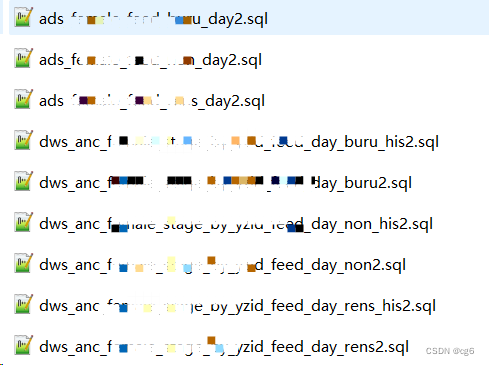
doris - 数仓 拉链表 按天全量打宽表性能优化
数仓 拉链表 按天全量打宽性能优化现状描述优化现状描述 1、业务历史数据可以变更 2、拉链表按天打宽 3、拉链表模型分区字段设计不合理,通用的过滤字段没有作为分区分桶字段 4、拉链表表数据量略大、模型数据分区不合理和服务器资源限制,计算任务执行超…...

服务器虚拟化及优势
服务器虚拟化是从一台物理服务器创建多个服务器实例的过程。每个服务器实例代表一个隔离的虚拟环境。在每个虚拟环境中,都可以运行单独的操作系统。 1.更有效的资源调配 使用虚拟化技术大大节省了所占用的空间,减少了数据中心里服务器和相关硬件的数量。…...
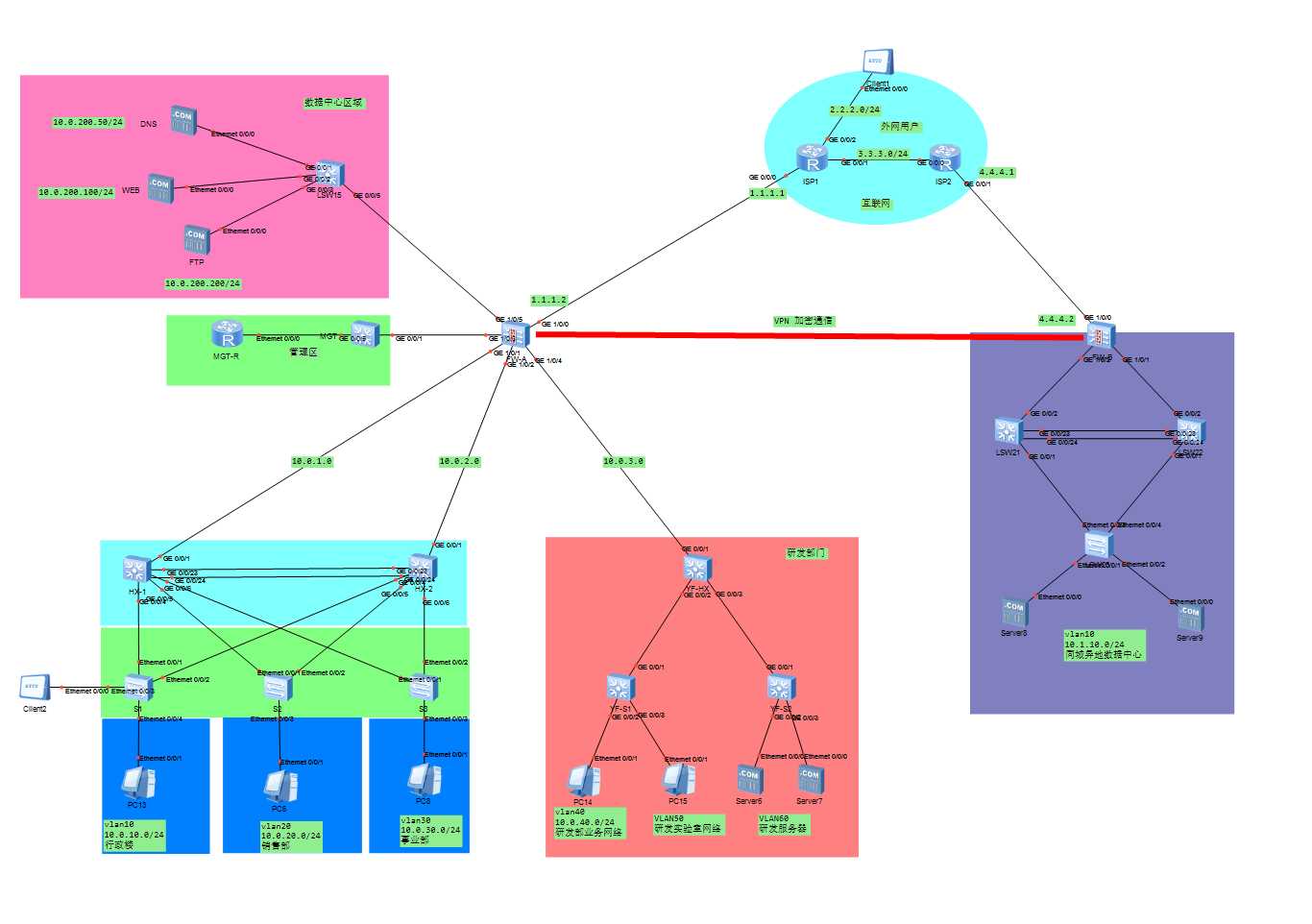
华为ensp模拟校园网/企业网实例(同城灾备及异地备份中心保证网络安全)
文章简介:本文用华为ensp对企业网络进行了规划和模拟,也同样适用于校园、医院等场景。如有需要可联系作者,可以根据定制化需求做修改。作者简介:网络工程师,希望能认识更多的小伙伴一起交流,私信必回。一、…...

git命令篇(持续更新中)
首先介绍这个网页:https://learngitbranching.js.org/?localezh_CN --提交命令 git commit --创建分支 git branch <分支名> --切换分支 git checkout <分支名> --合并分支 (合并到主分支去,把我合并到谁的身上去) 自己写的分支合并到主线…...
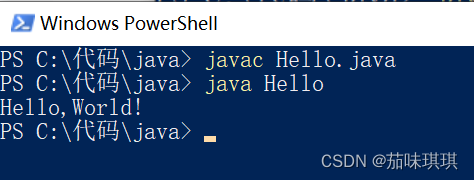
用记事本实现“HelloWorld”输出
一、在任意文件夹中创建一个新的文本文档文件并写入以下代码 public class Hello{public static void main (String[] args){System.out.print("Hello,World!");} } 二、修改文件名称及文件类型为 Hello.java 特别注意:文件命名必须与代码中类的名称相同…...

Python基础1
1. 注释 单行注释:以#开头。一般建议注释和内容用空格隔开。 多行注释:以一对三个双引号括起来的内容是注释。“““示例注释”””。 2. 数据类型 验证数据类型的方法:type(被查看类型的数据)。 注意:…...

4.2 双点双向路由重发布
1. 实验目的 熟悉双点双向路由重发布的应用场景掌握双点双向路由重发布的配置方法2. 实验拓扑 双点双向路由重发布如图4-6所示: 图4-6:双点双向路由重发布 3. 实验步骤 IP地址的配置R1的配置 <Huawei>system-v…...

AcWing《蓝桥杯集训·每日一题》—— 3768 字符串删减
AcWing《蓝桥杯集训每日一题》—— 3768. 字符串删减 文章目录AcWing《蓝桥杯集训每日一题》—— 3768. 字符串删减一、题目二、解题思路三、代码实现本次博客我是通过Notion软件写的,转md文件可能不太美观,大家可以去我的博客中查看:北天的 …...

第五天笔记
1. 简述图片验证码使用流程? 1.前段生成UUID随机值,作为GET请求参数 2.后端试图进行判断,调用工具类来生成图片验证码和内容 3.将验证码内容使用redis保存到本地,前端传入的uuid作为key, 4.在前段输入获取到的图片验证码,想后端发…...
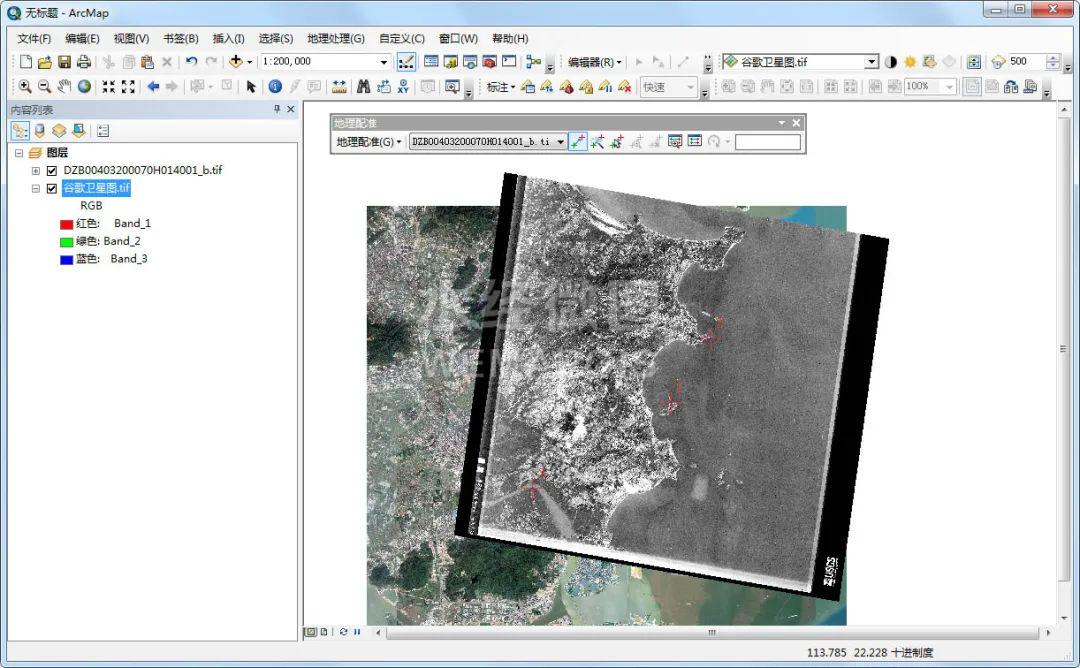
如何使用ArcGIS进行地理配准
1.概述 对于GIS数据而言,坐标信息是灵魂,有了坐标信息之后才能和别的数据结合使用,之前有介绍过矢量数据定义坐标信息的方法,针对栅格图,这里为大家介绍一下通过地理配准增加坐标信息的方法,希望能对你有所…...

【java基础知识】
Java中的基本数据类型是什么? byte:1字节,有符号,表示整数,范围为-128到127。short:2字节,有符号,表示整数,范围为-32768到32767。int:4字节,有符…...
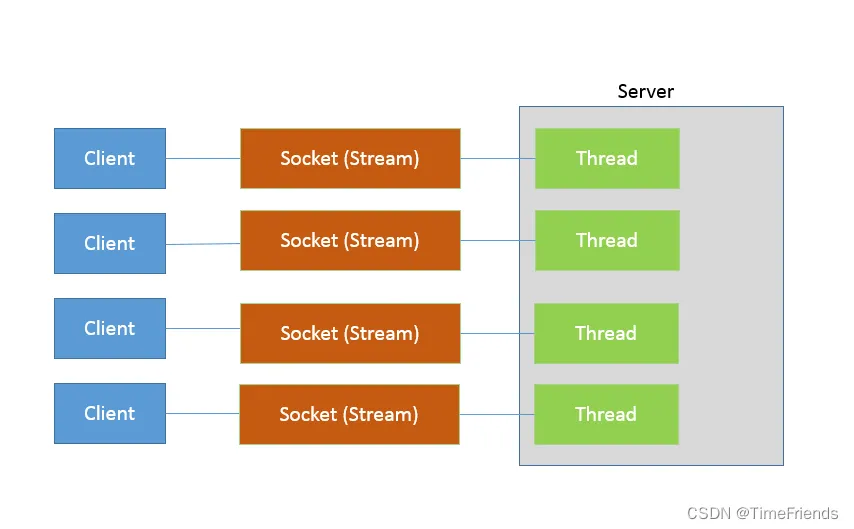
Java提供了哪些IO方式? NIO如何实现多路复用?
第11讲 | Java提供了哪些IO方式? NIO如何实现多路复用? IO 一直是软件开发中的核心部分之一,伴随着海量数据增长和分布式系统的发展,IO 扩展能力愈发重要。幸运的是,Java 平台 IO 机制经过不断完善,虽然在某…...

人的大脑遇事的思考解决过程
人遇到问题的思考解决过程,大概如下:1) 遇到问题;2) 首先,不是直接推理,而是用直觉在自己的知识模式库里搜索,有没有相似的模式或者相同的模式。3) 如果:3a)有…...

GNU zlib 压缩与解压文件详细介绍
GNU zlib 压缩与解压文件详细介绍 1.概述 zlib 模块为 GNU 项目的 zlib 压缩库中的许多函数提供了一个低级接口 2.使用内存数据压缩与解压 2.1.压缩与解压缩 使用 zlib 的最简单方法是将所有数据保存在内存中进行压缩或解压缩。 import zlib import binasciioriginal_dat…...
